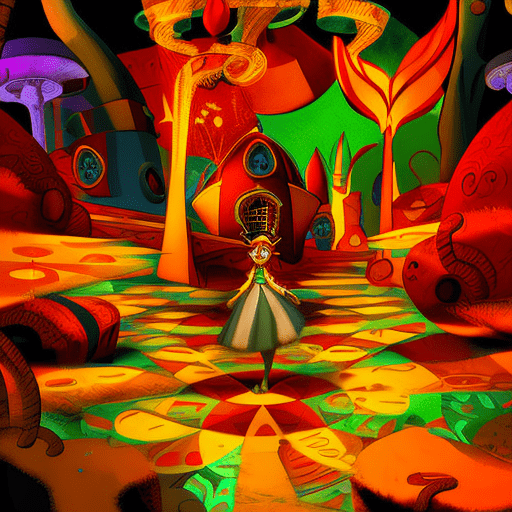Alice’s Adventures in Wonderland: A Whimsical Journey into the Absurd
Alice’s Adventures in Wonderland by Lewis Carroll is a whimsical and nonsensical tale that takes readers on a journey through a fantastical world. Filled with strange characters, peculiar events, and clever wordplay, this classic children’s book has captivated readers of all ages since its publication in 1865.
Down the Rabbit Hole: Alice’s Unexpected Adventure Begins
The story begins with Alice, a young girl who follows a white rabbit down a rabbit hole, only to find herself in a topsy-turvy world where nothing is as it seems. As Alice navigates through this strange land, she encounters a series of bizarre characters, including the Cheshire Cat, the Mad Hatter, and the Queen of Hearts. Each encounter presents Alice with a new challenge or puzzle to solve, often defying logic and reason.
Curiouser and Curiouser: Themes of Identity and Growing Up
One of the central themes in Alice’s Adventures in Wonderland is the exploration of identity and the struggle to find one’s place in the world. Throughout her journey, Alice constantly changes size, from being too small to reach a key to being too large to fit through a door. These physical transformations mirror her internal struggle to understand who she is and where she belongs.
Additionally, Alice’s encounters with the various characters in Wonderland highlight the absurdity and unpredictability of adult life. The Mad Hatter’s never-ending tea party and the Queen of Hearts’ irrational demands serve as satirical critiques of societal norms and expectations. Carroll uses these absurd situations to challenge the rigid rules and conventions of Victorian society, encouraging readers to question authority and think for themselves.
We’re All Mad Here: The Power of Imagination and Wordplay
Another prominent theme in the book is the power of imagination and wordplay. Carroll, who was known for his love of puzzles and riddles, fills the story with clever wordplay and nonsensical conversations. From the Mock Turtle’s melancholic song to the Queen of Hearts’ constant cries for “Off with their heads!”, the book is a playground of linguistic creativity.
Alice’s Adventures in Wonderland also celebrates the limitless possibilities of the imagination. Through her encounters with talking animals and magical creatures, Alice learns to embrace the absurd and let her imagination run wild. The story encourages readers to think outside the box, challenge conventional thinking, and embrace the wonders of the imagination.
Key Takeaways:
- Alice’s Adventures in Wonderland explores themes of identity, growing up, and the power of imagination.
- The story challenges societal norms and encourages readers to question authority.
- The book is filled with clever wordplay and nonsensical conversations, showcasing Carroll’s love for puzzles and riddles.
“I can’t go back to yesterday because I was a different person then.”
Alice’s Adventures in Wonderland is a delightful and thought-provoking tale that continues to captivate readers with its whimsical charm and imaginative storytelling. Through Alice’s journey, readers are reminded of the importance of embracing one’s true self, challenging societal norms, and letting the imagination soar. So, follow the White Rabbit and embark on a journey into the absurd – you never know what wonders you may discover along the way.












